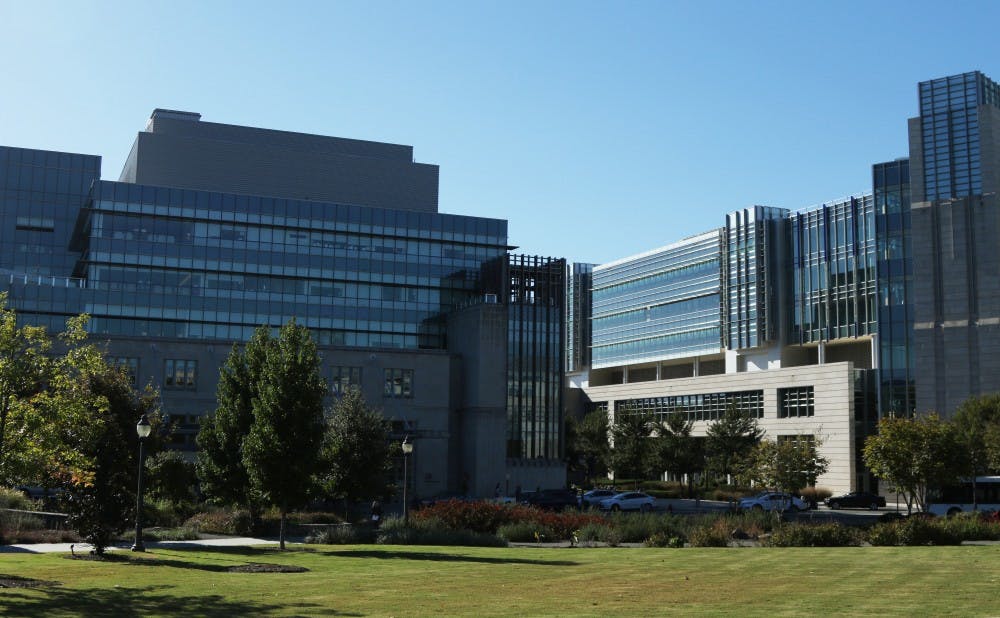Imagine you’re sick. Not a stretch, considering the severity of flu season at Duke has shut K-Ville down for students at least until Monday.
Now, imagine you’re sick, and can’t understand what your doctor is saying. You don’t speak English, and the doctor doesn’t speak your language.
This situation is more common than you might think. It is one that doctors in the Duke medical system have encountered increasingly often as Durham’s population of immigrants—especially Hispanic immigrants—has shot up in the past two decades. In response, Duke Health has implemented and expanded translation programs to accommodate patients whose first language is anything other than English.
Beatriz Morris, assistant professor of pediatrics, has practiced at the Duke Health Center at Southpoint for more than two decades. Born in Cuba, raised in the United States and educated in Puerto Rico, she has been using Spanish with her patients and their families “since day one.”
“The Hispanic population in Durham has tripled, maybe quadrupled since I came in 1995,” she said. “Most of it had consisted of people from Mexico. What’s changed in the past five years is that now I’m seeing a great number of Central Americans, people from El Salvador, Honduras, Guatemala, countries where before we never would we see anyone.”
Until recently, Duke pediatricians who weren’t bilingual like Morris only had one option for communicating with Spanish-speaking patients—phone translators. Now, at certain locations, there are in-person translators who can mediate the interaction between patient and provider.
“We have various people who are physically in the clinic available to translate,” Morris said. “It has been helpful because some people are fairly new to the area and feel more comfortable speaking with someone in their native language. And especially when it comes to your health, you want to make sure you get things right.”
Morris isn’t Duke’s only bilingual practitioner. She named four colleagues in pediatrics who as also bilingual in English and Spanish. She said she also regularly discovers doctors and residents who can speak a second language. As it turns out, Spanish isn’t the only one they might need.
“We see people who are Arabic-speaking, Vietnamese, Korean, Chinese, Italian, French and so on,” she said. “We see patients who speak dialects from India like Telugu and Tamil. We don’t necessarily have people who can translate all those languages.”
One of the few practitioners who can is Agnes Chao, a third-year resident in pediatrics who has lived, studied and worked between the United States, Hong Kong and Singapore. She said she speaks English, Mandarin and some Cantonese.
“I get super excited when I get families that are not bilingual and would benefit from somebody who speaks Mandarin,” Chao said.
However, Chao noted that she felt Mandarin may not be the “most necessary language” to know due to the comparatively large quantity of Spanish-speaking patients.
When asked what more Duke could do to meet the growing number of non-English-speaking patients passing through its health system, Morris suggested a more long-term, invested approach than what has been implemented thus far.
“We're spending so much money trying to make sure patients understand, making sure everything's translated to the other language,” Morris said. “We’re a university. How about teaching the patient population to speak the language?”
Though she qualified that this may not be feasible, Morris pointed out the autonomy and knowledge of cultural differences patients would gain from Duke-provided English lessons. In a similar vein, Chao proposed Duke-administered Spanish lessons for its practitioners as a way to further narrow the language gap Duke has already begun to bridge.
Get The Chronicle straight to your inbox
Signup for our weekly newsletter. Cancel at any time.

